From Yeltsin to Putin: How the Super Rich were Affected
- Liam Wrixen
- Dec 16, 2019
- 9 min read
Author: Liam Wrixen
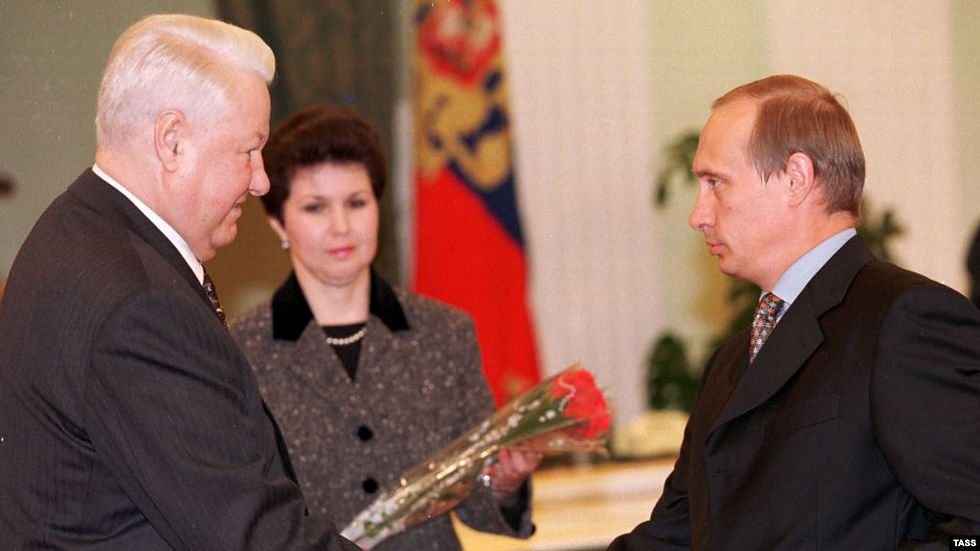
The Fall of the USSR and Yeltsin's Russia
Following the fall of the Soviet Union towards the end of 1991, Russia transitioned into a market-based economic and political system. Under the reign of the Soviet Union, private ownership of both private property and enterprise was illegal. Therefore, the move from a state centralised economic system to a market-based economic one allowed for private ownership to become legal. The process of transition was a very disorganised system which was 'flawed and unfair' (Goldman, 2004: 34) and led to the creation of 'an unstable business environment' (Goldman, 2004: 34).
As a result of the lack of experience and formality in transitions from Communism to a Market-based economic system, individuals who had good connections and had knowledge on how to take advantage of this disorganised system suddenly became billionaires. At the time, the Russian Government, led by Boris Yeltsin, began 'selling off state resources and enterprises at little or no charge' (Goldman, 2004: 35) in a manner which highly 'rigged the process' (Goldman, 2004: 35) of transitioning out of the Communist economic system.
The Russian government introduced a voucher system which was intended to be distributed equally amongst the population. 'Virtually every Russian was issued a voucher good for shares in a soon-to-be-private enterprise' (Goldman, 2004: 34) and this voucher system meant that individuals who had these vouchers could purchase ownership in one of the 45,000 companies which were up for auction. However, this did not go to plan.
With many people of the Russian population not completely understanding how the voucher system worked, they began to sell off their vouchers to individuals who would offer them some quick cash. These individuals would later become the Oligarchs. The Oligarchs would purchase these vouchers for much less than their potential value and with them they bought large stakes in companies which allowed them to become 'dazzlingly wealthy almost overnight' (Goldman, 2004: 34).

Individuals such as 'Khodorkovsky got a 78 percent share of ownership in Yukos, worth about $5 billion, for a mere $310 million' (Goldman, 2004: 35). Under the Yeltsin government, the system of transition was flawed and highly corrupt as 'the government was generally unable to exercise much control ' (Goldman, 2004: 35) over the newly rich and powerful oligarchs. The oligarchs had achieved great success under the Yeltsin government and the lack of formality which allowed them to become billionaires overnight. However, under Putin, things changed.
Putin Comes to Power
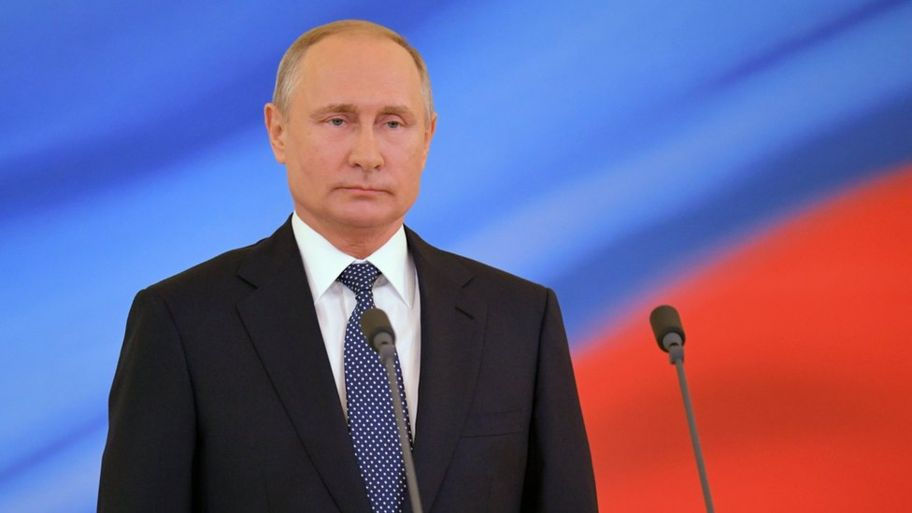
With Putin now in power, things changed. Putin wanted to ensure that he had complete control over the Oligarchs and things would not be the same as they were under Yeltsin. On the 28th July 2000, Putin told 21 of the most important oligarchs in Russia that there would be the implementation of a new 'social contract with them' (Sawka, 2014: 1). Putin 'would not interfere with their business or renationalise state resources as long as they stayed out of politics -- that is, as long as they did not challenge or criticise the president' (Goldman, 2004), this would allow them to 'get on with the business of making money' (Sawka, 2014: 1). The oligarchs would be allowed to keep their vast wealth and control over the companies they acquired, but would not receive the same preferential treatment as they once did. At the time, people believed that this would be the end of the Oligarchy. However, this was far from the case. This was just the beginning of Vladimir Putin's Oligarchs. Unlike under Yeltsin, Putin's oligarchs would no longer 'have privileged access to the corridors of power' (Sawka, 2008: 185) and potentially 'hold the state hostage whenever the regime needed financial or other support' (Sawka, 2008: 185).
Vladimir Putin would not create a new Oligarchy which would include loyal colleagues and friends from important parts of government, such as the Military, Security Forces and Interior Ministries. This would allow Putin to have control over most aspects of the Russian government and ever increase his political power. If some oligarchs behaved badly or spoke badly about Putin, he would ensure that they were stripped of their power and wealth.
Khodorkovsky Arrest

A notorious example of Putin taking action against a former Oligarch was when he jailed the richest man in Russia, 'the oil baron Mikhail B. Khodorkovsky' (Mydans and Arvedlund, 2003). Khodorkovsky was arrested in 2003 'and jailed on charges of fraud and tax evasion' (Mydans and Arvedlund, 2003). Khodorkovsky is an example of a Yeltsin-era oligarch 'who gripped cheap assets in rigged auctions after the Soviet Union collapsed in 1991' (Mydans and Arvedlund, 2003), who did not want to conform to Putin's new stance on what the Oligarchy should look like. The arrest of Khodorkovsky was used as a warning to Oligarchs to ensure their loyalty to Putin and the Kremlin.
The Oligarchy 2.0.
The Oligarchy has changed drastically since the collapse of the USSR. Oligarchs know that there are limitations to their power, wealth and freedom. These 3 aspects are highly, if not totally, dependant on their loyalty to Vladimir Putin.
The Putin administration also seised numerous profitable enterprises and turned them into state-controlled companies. Putin would then appoint his close friends and political allies into roles such as CEO in order to give them vast amounts of wealth and ensure their loyalty to the regime. This created the second wave of oligarchs. Oligarchs control the vast majority of Russia's wealth and industry. Putin made it clear through policies and actions that 'the powers-that-be would choose the winners and losers' (Hoffman, 2011: XII) amongst the super rich in Russian society. The evolution of the Oligarchy can be summarised into one sentence: under Yeltsin, the Oligarchs gained their power through their wealth, however, under Putin, the Oligarchs gained their wealth and power through their loyalty to Putin and the Kremlin.
Why the Shift from Yeltsin to Putin Changed the Oligarchy:
To understand any development in Russian society it is important to consider the fundamental changes in the nature of governance from Boris Yeltsin to Vladimir Putin. The anarchy encountered in the early days of the Russian Federation under Yeltsin (see Slider 2014) was substituted by a strong Kremlin which centralised power and gradually controlled additional aspects of society (see Gel'man 2006; 2008). Creeping inflation, rebellious governors, violent internal conflict, political uncertainty and a strong independent oligarchy have been substituted by a robust centre, subordinate legislatures and regions, and a loyal oligarchy which supports the activities of the centre but is hierarchically inferior. Below, the relationship of the government with the oligarchs will specifically be examined.
The Yeltsin era of symbiotic co-existence and reciprocal influence
The Yeltsin era gradually became one of a symbiotic partnership between the oligarchy and his government. The 1996 elections rendered the oligarchs important allies and encouraged them to informally meddle with governance.
The 1996 elections and the semibankirschina shadow government Yeltsin faced the prospect of being defeated in the 1996 Russian Presidential Elections, due to a variety of reasons, such as failing health, the ongoing economic crisis, and the unsuccessful war in Chechnya (Brudny 1997). His main opponent, Gennady Zyuganov, advocated for a return to socialism (see A Word to the People as an example) which would be disastrous to the oligarchy. Realising the prospect of Zyuganov to win the elections, they felt compelled to act.
They successfully supported Yeltsin’s campaign via a range of ‘machine politics’ which included engaging in media manipulation, and deploying their best consultants and financial resources (Hale 2014; Hoffman 2011). Their contribution was estimated to be as high as $100-$500 million. They were no longer simply powerful actors in the market domain, but they became an essential part of the political process (Sakwa, 2011:10).
“Their wealth was grafted to his power […] neither they nor Yeltsin could let go of each other [as it became evident following the 1996 events]” (Hoffman 2011: 2).
The seven most influential oligarchs, who also owned banking institutions, were named semibankirschina. They had rallied together, despite their differences, to support Yeltsin, and thus gained considerable influence in political and economic affairs (see Kotz & Weir: 216-220; Goldman & Marshall, 2003: 132-3). Their prominence as significant stakeholders in informal governance can be exemplified by the firing of Chernomyrdin as Prime Minister in 1998 (in Hoffman, 2011: 3-4). Predicting Yeltsin’s eventual demise, they wanted to ensure the individual holding the office of the Prime Minister – the apparent heir – was approved by them. They would control key decisions and appointments, acting as a mechanism of ‘(informal) corporate governance’ (ibid.). To oust Chernomydrin with whom they disagreed with, the semibankirschina assembled in the Yukos boardroom. They devised a plan, executed by Boris Berezovsky the next day. He appeared on Gusinsky's NTV and delivered a speech, which resulted in Chernomyrdin fired by Yeltsin the next day. Their power was such that they had succeeded in having an entire government sacked. Later in the year, Berezovsky had him re-appointed, personally escorting him to the Prime Minister’s office. The Duma overturned the appointment, but it was evident that the oligarchs, with Berezovsky at their lead, were capable of playing kingmaker with the executive. They utilised their power not merely to attain natural resources, and, hence wealth, but also to control developments in formal governance primarily with informal means.
The ‘Family’; A personalised group, colloquially known as “The Family” of Yeltsin, became integral to the governance of Russia. It consisted of numerous oligarchs, including Berezovsky. This group was even more exclusive and closer to Yeltsin than the semibankirschina. Some authors attributed the Family’s capture of bureaucracy as the determining factor for the misappropriation of international funds, and the capability to launder money in offshore destinations unscathed. Despite being an informal group, their grasp on formal decisions was decisive. It has often been alleged that they had to sanction every important decision in the Kremlin.
Putin Strikes Back:
The Putin era is best understood in terms of Kremlin’s successful attempt to consolidate authority via a process of centralisation (The Economist, 2011). Thus, a situation is observed whereby the state becomes the undisputed master in the political arena. This has had a profound impact on both the limits of the oligarchs’ influence and their very nature as actors.
“The Family” sanctioned the emergence of Putin to presidential power, in a bid to ensure the security services sustained the primacy of the leading elite. Yet, Putin soon issued a “declaration of war” to the oligarchs, who he is thought to have despised because of their selfish endeavours (Goldman, 2004: 33). A pact was offered whereby the oligarchs would pledge not to contest in the political domain, in exchange for getting to retain their resources. The oligarchs who contested the pact were mutilated by the Russian state and the siloviki, with the latter gaining prominence as an informal group of influence. There is no denying that the governance in contemporary Russia is influenced by formal and informal constellations. Yet, unlike the Yeltsin era, the state is superior. A series of tactical movements from the Kremlin have solidified this reality. An example is the formation of Rosgvardiya, which has had the effects of diluting the emerging power of the MVD and the FSB to controllable levels (see Sukhankin 2017).
"The state has a cudgel in its hands that you use to hit just once, but on the head. We haven't used this cudgel yet. We've just brandished it... [But] the day we get really angry, we won't hesitate to use it"
- Vladimir Putin to Le Figaro on the Berezovsky feud (2000)
In short, the Yeltsin regime is characterised by fragmentation which enabled a multitude of informal actors to substantially influence the state. The oligarchs were present in the most important groups and exerted leadership. The Putin era sees this symbiotic relationship quashed. Formal and informal groups contest amongst each other for influence, but cannot challenge the dominance of the Kremlin, which is positioned on top of the vertikal (Monaghan, 2011). Powerful economic elite still exist, but they abide by the same rules. The relationship is still reciprocal, as the oligarchs pledge their loyalty to retain their status and gain state-distributed benefits, but they are hierarchically inferior to Putin.
Reference List:
1. Brudny M. Y. (1997). In Pursuit of the Russian Presidency: Why and How Yeltsin Won the 1996 Presidential Election. Communism and Post-Communist Studies 30(3). Pp. 255-275.
2. Gel’man V. (2008). Party Politics in Russia: From Competition to Hierarchy. Europe-Asia Studies 60(6). pg. 913-930.
3. Gel'man V. (2006). From “Feckless Pluralism” to “Dominant Power Politics”: The Transformation of Russia's Party System’. Democratization 13(4). pg. 545–561.
4. Goldman, M. I. (2004). Putin and the Oligarchs. Foreign Affairs, 83(6).
5. Goldman M. I. (2003). The Piratization of Russia: Russian Reform Goes Awry. London and New York: Routledge.
6. Hale H. E. (2014). Chapter 5: Russia’s Political Parties and their Substitutes. In: White S., Sakwa R. & Hale H. E. (eds.) Developments in Russian politics. Basingstoke: Palgrave Macmillan. Pp. 77-96.
7. Hoffman, D. (2011). The Oligarchs. New York: Public Affairs.
8. Kotz D. & Weir F. (2007). Russia's Path from Gorbachev to Putin: The demise of the Soviet System and the New Russia. London and New York: Routledge.
9. Monaghan A. (2011). The Russian Vertikal: the Tandem, Power and the Elections. Chatham House, REP Programme Paper 2011/01.
10. Mydans, S. and Arvedlund, E. (2003). POLICE IN RUSSIA SEIZE OIL TYCOON. [online] Nytimes.com. Available at: https://www.nytimes.com/2003/10/26/world/police-in-russia-seize-oil-tycoon.html
11. Sakwa, R. (2008). Putin and the Oligarchs. New Political Economy, 13(2).
12. Sakwa, R. (2014). Power and Contradiction in Contemporary Russia. London: Routledge & Taylor Francis Group.
13. Slider D. (2014). A Federal State? In: White S., Sakwa R. & Hale H. E. (eds.) Developments in Russian Politics. Hampshire: Duke. pg. 157-169.
14. Sukhankin S. (2017) Russian National Guard: A New Oprichnina, 'Cyber Police' or Something Else? Eurasia Daily Monitor 14 (38).
15. The Economist (2017). A tsar is born. October 28th 2017. pg. 11.
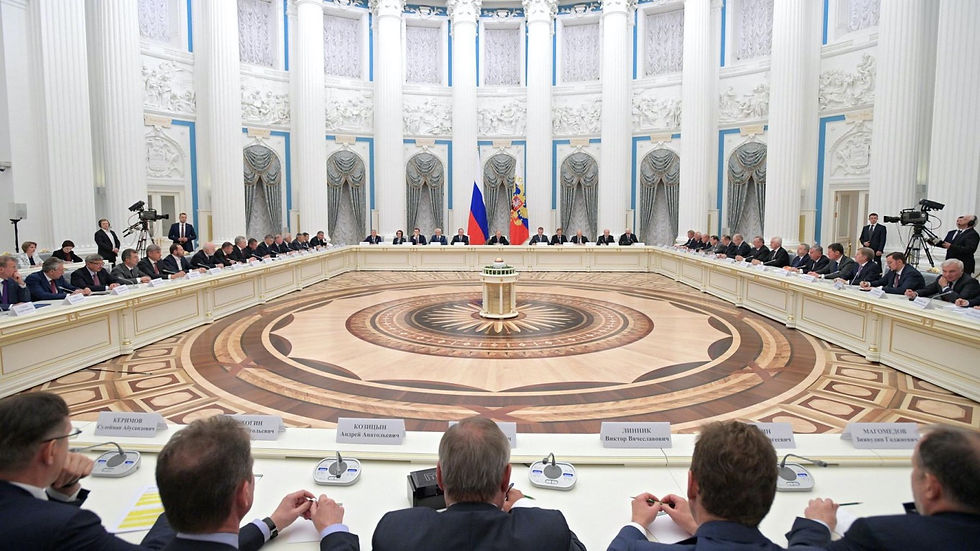


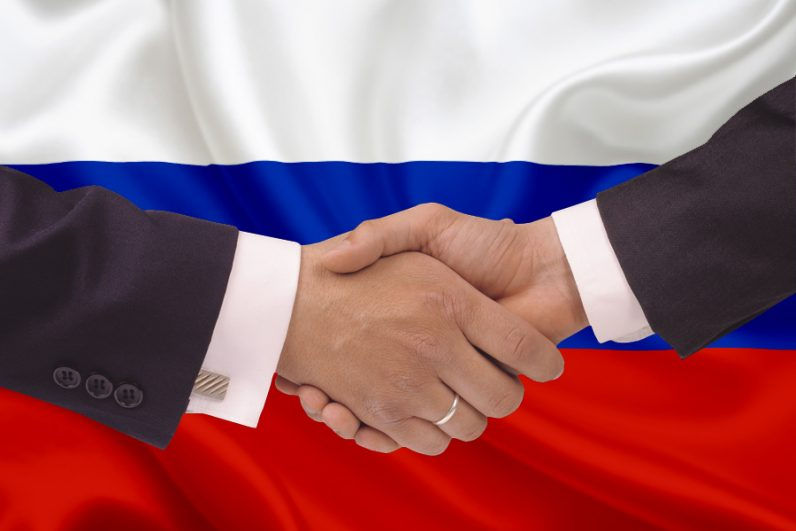
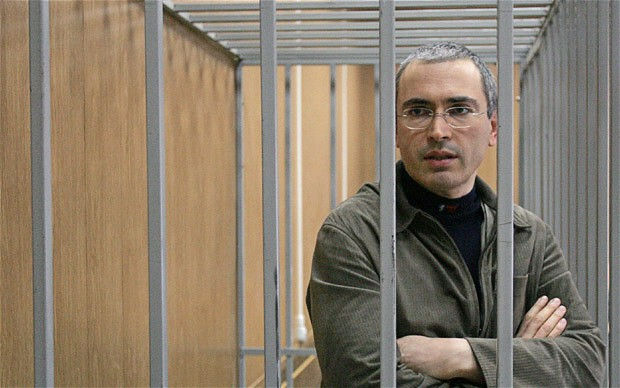
Bình luận